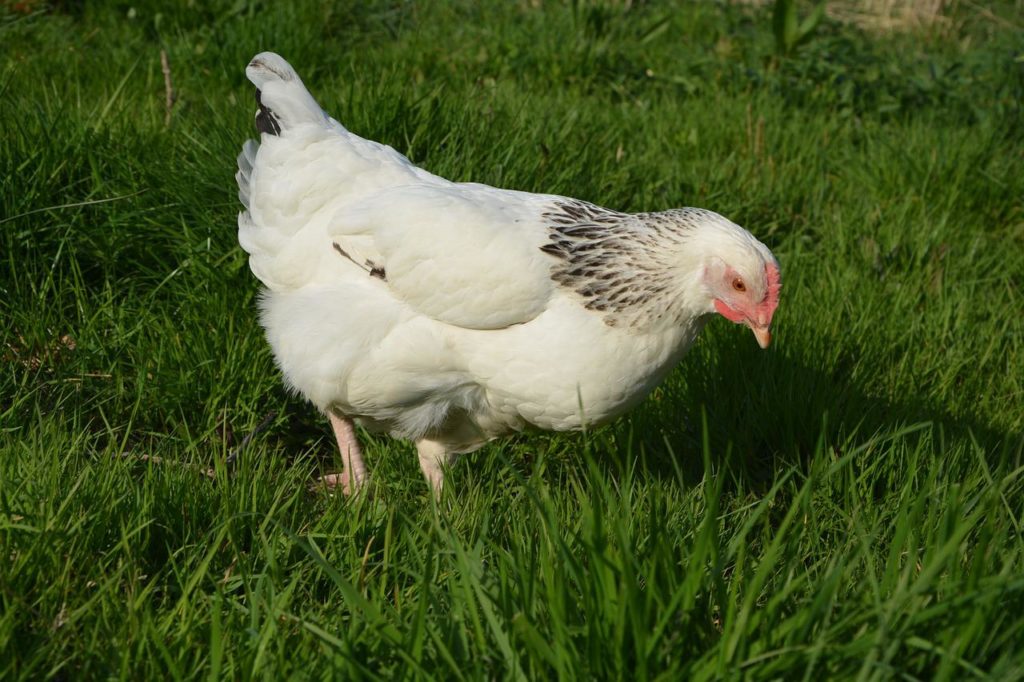We continue our series of articles
about the diet of feathered pets. We have already said that as young chickens mature, their nutrition system changes.
In this article, we will consider the second stage of maturation of young chickens of egg cross. Particularly, the features of feeding at the age of 56 to 112 days.
Продолжаем наш цикл статей
о рационе пернатых питомцев. Мы уже говорили, что по мере созревания молодняка кур система его питания меняется.
В этой статье мы рассмотрим второй этап созревания молодняка кур яичного кросса. А именно, особенности кормления в возрасте от 56 до 112 дней.
- 1-7 weeks
- 8 -16 weeks
- 17-20 weeks
Nutrition system
- Amount of feed and ingredients. Up to 60 days, the daily feed intake should not exceed 50 grams. Starting from day 60, the norm increases to 70 grams. At this stage of maturation, not only the amount of feed consumed changes, but also the ratio of useful elements in it. The percentage of protein decreases and the amount of carbohydrates increases. Previously, the norms of EE and PFC were: EE -1214kJ, P – 15-20%, F – 4-5%, C -60-75% – up to 90 days. Now: EE – 1088 kJ, P – 14%, F -3-4%, C – 60-80%. This increases the allowable level of fiber to 7%.
- Feeding frequency. From day 46, the frequency of meals changes, from 5 to 4 times a day. This mode lasts on average up to 65 days. Then there is a transition to three meals a day. Reduction in nutrition is necessary to slow down the growth rate of the bird and its more progressive maturation. Too fast growth leads to early maturation, which in turn affects the level of productivity. In such laying hens, not only the number of hatched eggs is less, but also their mass.
- The main necessary components: – cereals, – meals, – legumes, – vegetables, – bran, – oilseeds.

Helpful Hints
Many poultry farmers agree that chickens are quite unpretentious birds. They eat everything, but the problem is that not all foods consumed are good for the body. Here is a small list of what not to give at any age.- Bread. We’re speaking about the fresh product only. It should not be present in the diet of chickens. It has a bad effect on the digestion of birds, up to a fatal outcome. The exception is crackers. They can be given, but included in the daily diet is also not recommended.
- Fish. It can be present in the diet of poultry. When fed properly, it will become a valuable source of protein, phosphorus, calcium, and unsaturated fats. But it is worth adhering to certain conditions:
– not raw
– not salty or with the addition of otherspices
– not the whole one
If you want to add fish to a bird’s diet, it should be boiled, chopped and added to the general mixture. Served in this form, the fish will indeed be a source of benefit and health for your bird. - Potato. In its raw form, this product, and especially its cleaning, is too roughage. Therefore, this option should be excluded. But boiled potatoes will be an excellent addition to the main diet.
- Beet. The vegetable itself is good and healthy. But chickens in their pure form are contraindicated. It has a laxative effect on digestion. It is worth adding to the total mass in grated form.
- Styrofoam. Chickens are quite active creatures. Free range individuals can often be caught digging in the ground. Exploring the territory in this way, birds often eat everything they find under their feet. Styrofoam often ends up on the list of such substances. Once in the body, it leaves trace elements there that the bird’s body is not able to process. And they stay forever inside, with a cumulative poisoning effect.
When choosing a diet for a bird, be careful! Inattention can harm your household and budget. If you don’t have the time to plan your diet and prepare your food, consider a combination food. Consuming it, your bird will always receive the necessary supply of nutrients, at a minimum cost of your time!
Thank you for being with us!
What to feed laying hens?
Compound feed for laying hens
More about feeding chickens:
Compound feed for chickens of egg cross from 1 to 7 weeks
What to feed newborn chicks? Read here:
Compound feed for broiler chickens from 0 to 7 days






